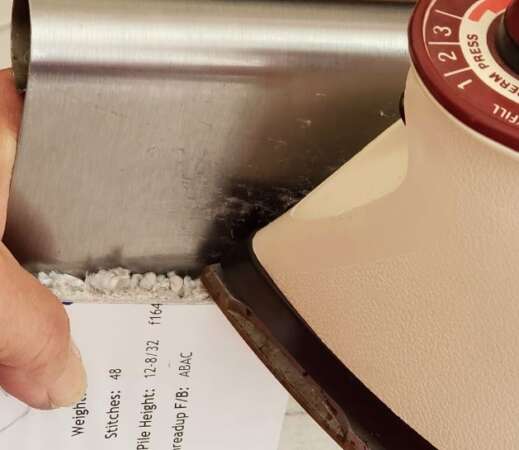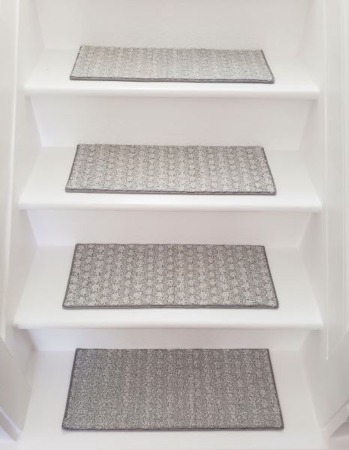
Using either carpet remnants or inexpensive floor mats is an economical way to make your own carpet stair treads. Here are two examples of how to make your own carpet stair treads, using either a piece of carpet remnant or inexpensive purchased carpet mats.
If you don’t have carpet remnants and can’t find inexpensive carpet mats, another option would be to keep an eye out for floor runner carpets at your local thrift stores.
Making carpet stair treads from carpet remnants allows you to coordinate with the carpet already installed in your home and make them to any measurement you prefer.
The downside is that this is a little more labor intensive and requires a little more investment versus creating carpet stair treads from floor mats. When using a remnant, you will need to seal the entire perimeter of the carpet and add twisted cord lip trim for an attractive finished edge. You’ll find instructions and tips further down this page.
Using floor mats is another way to make DIY carpet stair treads. You can usually find these for $1 to $4 each at your local dollar stores. The nice part about using floor mats is that they are inexpensive, and only one side needed finishing once the mats were cut in half. We were able to find nice neutral gray mats at the local dollar tree, but they only had a 4 in stock in the color we wanted so we had to go to a few more stores in order to get the remaining number needed (we needed 7 mats in all).
The downside to using floor mats is that you won’t be able to modify the width or depth of the carpet stair treads, and you’ll be limited in color and carpet pile style options (if you are trying to match existing installed carpeting). Again, instructions and tips are further down this page.
Using Carpet Remnants To Make Carpet Stair Treads
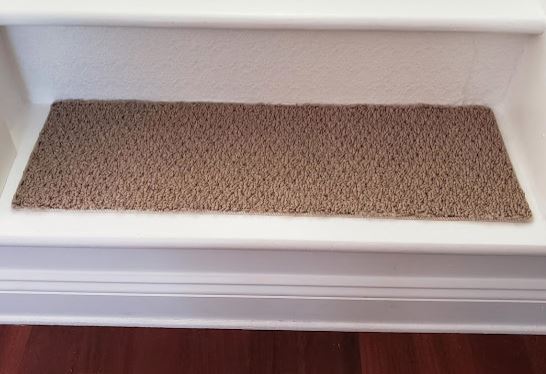
If you have leftover carpet, you can use the remnant to make coordinating stair treads. Using the remnant allows you to match carpeting installed in your home. It also allows you to choose the stair tread dimensions. This is a great option, especially if you have stair treads that wider or deeper than average or if you also have a stair landing that you would like covered.
You will need to have some cording to use for finishing the edges. The best option is to use trim lip cord. This twisted rope trim include a lip that can be used to align the cord evenly with the edge of the remnant. You can use cord without the lip, but it will be harder to get crisp, straight edges.
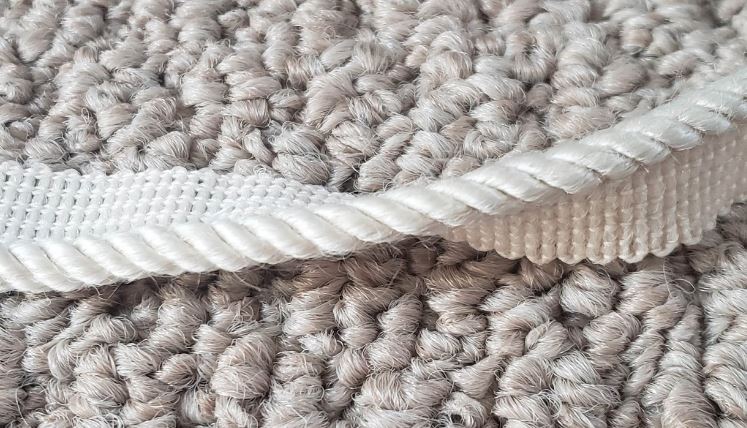
Here are some trim lip cords options at Amazon:
If you’d rather go with a ready-to-use option, there are producst made specifically for binding off carpets with up to 22 color options:
You will also need some adhesive glue. The type you select is only important if you want to be able to wash your carpets.
The average carpet stair tread covering is 9 inches deep by 29 inches in width. Before cutting your remnant, decide on the dimensions you would prefer then transfer that size to the back of your remnant using a permanent marker.

Make your cuts using a box cutter with a fresh blade and something to use as a straight edge guide such as a long level.
Beginning at the center of the carpet remnant, use a hot glue gun to attach the lip to the underside. Do not glue the first 2 inches of lip trim yet; you will need that little bit of excess unglued in order to seam together both ends of trim. Don’t worry about any sections of frayed carpet at this point. You’ll take care of those later.
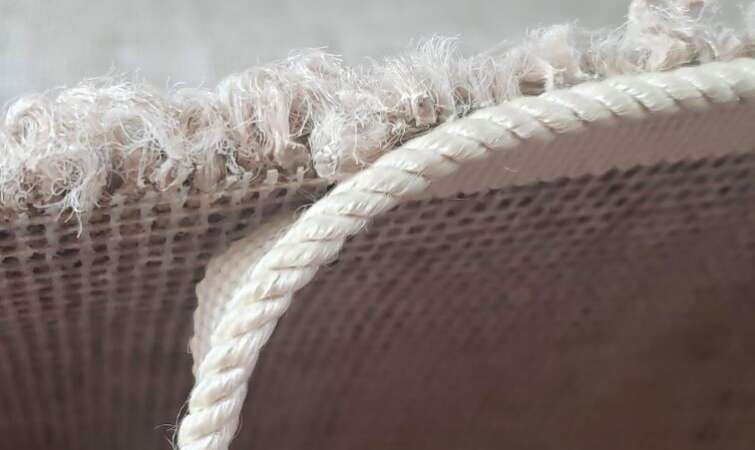
When you reach a corner, mark and cut the overlapping sections of lip, and glue into place.
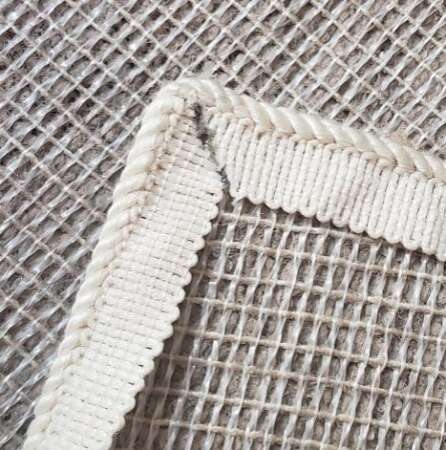
Work your way around the entire carpet remnant, again leaving the last two inches of trim unglued. You now have two ends that will need to be joined in order to get a seamless appearance.
Trim off about an inch of the lip beneath each end of cord and unravel the rope. Weave the unraveled ends together and secure them with more hot glue.
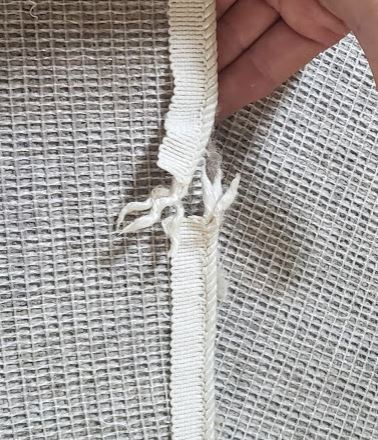
Next, flip the carpet right side up. Before adding the adhesive glue to finish the edges, take care of the loose carpet frays. Some may need to be hot glued back into position or just snipped off. Once that’s done, run a bead of glue along the inside seam of carpet. If you are using Alene’s Tacky Glue, you will be able to press the carpet pile down almost immediately so that the carpet pile is touching the trim lip cording so that there are no gaps and any frays are contained.
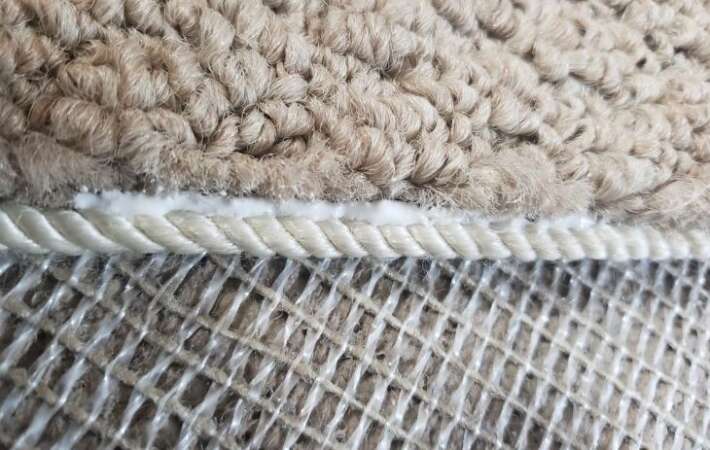
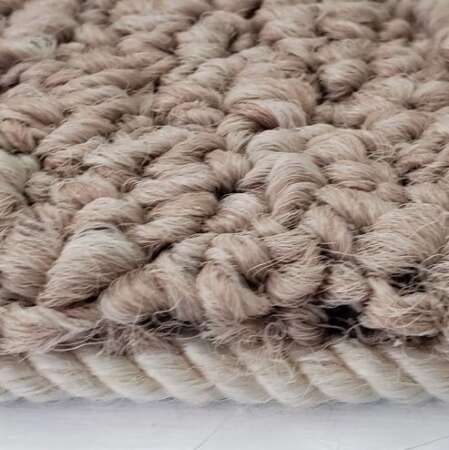
How To Make Carpet Stair Treads Using Inexpensive Carpet Mats

These are by far the easiest and least expensive way to make carpet stair treads for your stairs. We found these at our local dollar tree. They were perfect for our needs; only $1 each in a neutral color and low maintenance berber pattern.
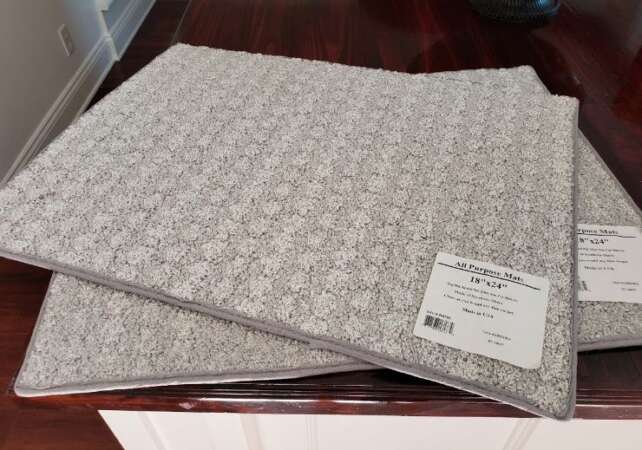
The only supplies you will need are a glue gun and an iron. The downside to this method is you are limited in your carpet pile options and the carpet treads will be shorter in length than standard treads. You might also have to visit several stores to get enough matching mats for all your steps.
Cutting each match in half lengthwise gave us two sections at 9″ by 24 “.
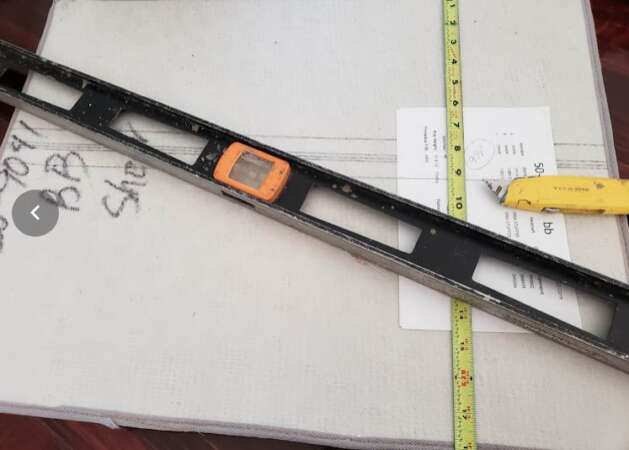
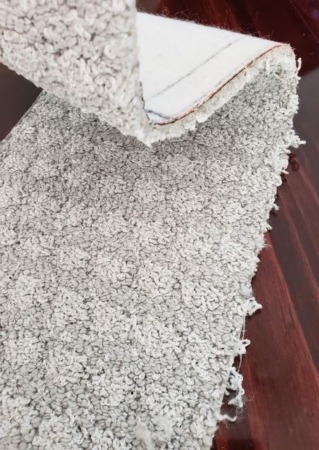
After cutting the mat in half, run a bead of hot glue along the cut edge. Don’t worry about trying to contain any frayed carpet sections; you’ll deal with those later. Just focus on creating a glue barrier to prevent any additional carpet treads from unraveling by getting the glue into the exposed edge of the carpet backing.
After you’ve finished applying glue to the cut section of carpet, slowly run a hot iron along the glued edge while pressing the carpet pile flat using a flat tool such as a stainless bread scraper. The reason you will want to press down the carpet pile is because as you run the iron along the edge, the iron re-melts the glue, spreading it further into the carpet backing as well as the fibers, and simultaneously creating a sealed, flat edge.
